Insight: How Scotland on Sunday made such a mark on Scottish journalism
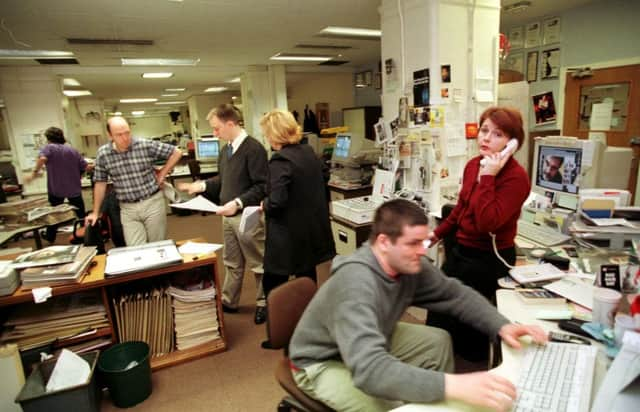

It will start with a celebratory lunch in the building where they launched a new type of Sunday journalism and is likely to end, in time-honoured fashion, in the adjacent howff where drinks were downed into the small hours.
On Tuesday, some of the staff who produced the early editions of this newspaper will gather at the Scotsman Hotel in Edinburgh, its erstwhile home, to mark its 30th birthday, before raising a glass – or many – to the future at the Jinglin’ Geordie bar in Fleshmarket Close.
Advertisement
Hide AdThe birth was in a different media era – before the internet and mobile phones, but also when smoking was still common in newsrooms and expense claims included £65 taxi journeys twice a week to get executives home from the pub.
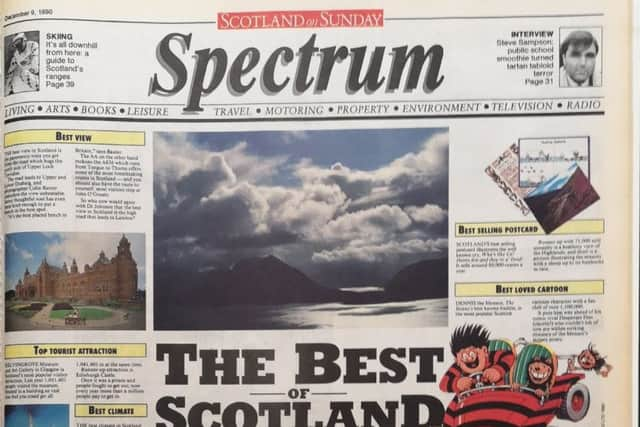

That first edition, on 7 August, 1988, closed the gap in the market for a quality Scottish Sunday paper, which has endured through 1,558 issues and 11 editors over the past three decades.
But the title that came to take pride in its reputation for setting the week’s news agenda with award-winning exclusives and exposés had far from the surest of starts.
As its first deputy editor, Brian Groom, recalled: “We were ready on time – just. We had created dummy papers on each of the three weekends before, but these were still a work in progress. Half the reportingstaff arrived only in the week of the launch.”
Reception to the first edition was decidedly mixed. The verdict of industry trade paper UK Press Gazette was “worthy, weighty and well-meaning – but needing more editorial sparkle”. It liked the sports, features and business pages but complained that in the news “there wasn’t a good exclusive in sight”.
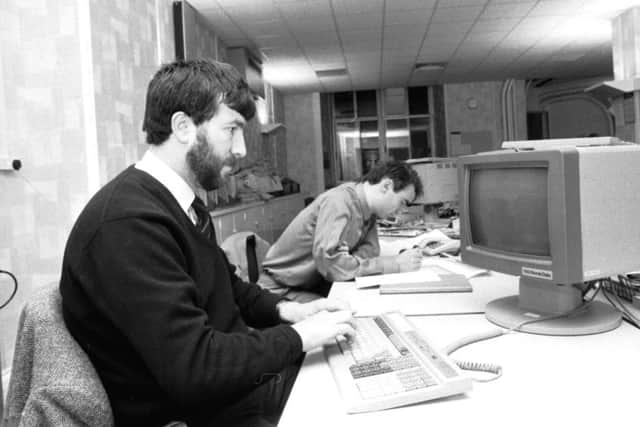

More than 100,000 copies of the 58-page, three-section broadsheet were bought by a curious public, despite the “very muddy black-and-white” print quality, as Groom described it.
Advertisement
Hide AdHowever, circulation then rapidly collapsed, and owners, Thomson Regional Newspapers (TRN), soon cast around for a replacement for 61-year-old launch editor Alastair Stuart, who was also TRN’s editorial director. In the interim, ex-Sunday Times executive Ron Hall was rushed in to steady the ship.
The person they found was Andrew Jaspan, who had been sent north by Sunday Times editor Andrew Neil just before the launch of SoS to set up a Scottish edition to “blunt or block” the new paper’s success.
Advertisement
Hide AdIt can now be revealed that TRN approached Jaspan just weeks after the rival paper appeared in October 1988. Speaking for the first time about his time at the paper, Jaspan said he remembered the launch issue as “underwhelming. I could not see it working”. But he accepted the job, he said, not only for the opportunity to have responsibility for an entire newspaper, but for relief at leaving the Murdoch empire.
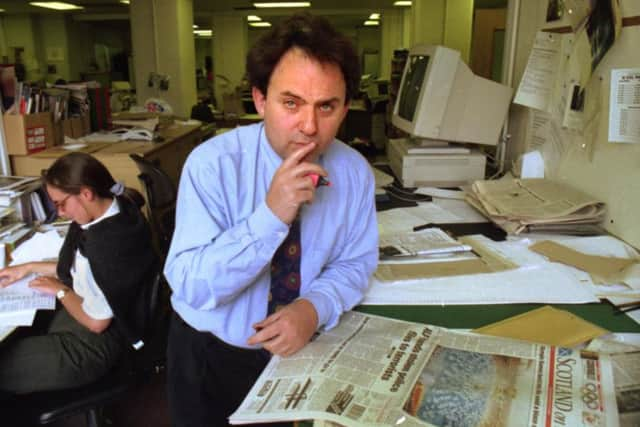

Jaspan made major changes as soon as he took over as editor in early 1989. Managing director Roger Ridley-Thomas agreed SoS should be re-positioned as “a high-quality, thinking-person’s paper, optimistic and proud for Scotland while internationalist in outlook”.
Jaspan said: “I put my vision for the paper to the team. I had to be very blunt with them. SoS was on its knees but I was confident that with the right team, the right journalistic mix and pitch, we could turn it around. And I had the excellent Brian Groom to help me. Most of the launch team left within a year and in their place we assembled an array of talent that will stand as among the finest ever.”
Among the many young reporters to go on to great things was Kamal Ahmed, now the BBC’s economics editor, who was appointed last week as its editorial director.
A series of features by investigative journalist George Rosie, called Scotching the Myth, debunked claims that Scots were “subsidy junkies”. Jaspan recalled: “Alex Salmond said that was a catalysing moment for both Scotland and the SNP because it gave them some ammunition. That really stirred things up politically. It was a very important and ground-breaking moment.”
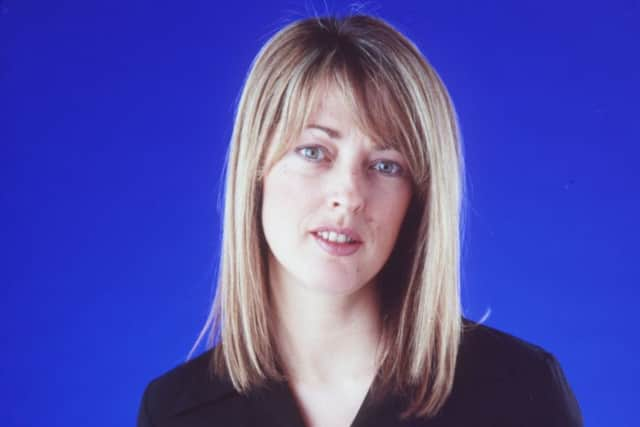

Margot Wilson, the paper’s only female editor to date, in 2001-2, also had close links with Salmond. She said: “He was the politician who was most in touch with me as an editor. He was on the phone constantly, because he knew it was vital to have a dialogue with the press.”
Advertisement
Hide AdJaspan may have transformed the paper’s fortunes, but he was seen as a divisive figure. Social affairs correspondent Mandy Rhodes, whose exclusives included one on the Orkney child abuse case, and who is now editor of Holyrood magazine, said: “Jaspan told us we were all crap and made us work harder. That crushed some people. But he told us we had a licence to ask anyone anything we liked, and we did. The camaraderie I have not found anywhere else.”
Scottish political correspondent Derek Bateman said: “Our paper copy was the telex sort with holes punched down either side to fit in the sprockets of the printer. Andrew Jaspan liked to tear off the copy and would read each story intently. So intently that one day, as he scanned my copy, he pulled off the detachable paper edges, put them in his mouth and started chewing. It became my boast that the editor liked my story so much, he ate it.”
Advertisement
Hide AdLiterary editor Alan Taylor, now editor of the Scottish Review of Books, said: “I was certainly indebted to Andrew Jaspan, who gave me carte blanche to interview writers around the globe, which led to my meeting in Tuscany with Muriel Spark, which to a degree changed my life.
“He was like Mourinho. He wanted to create not only the best newspaper in Scotland – which SoS was by a country mile – but one of the best in the world. We won prize after prize and circulation boomed.
“Our aim was to find writers who were hungry, such as Ajay Close, Euan Ferguson, Aaron Hicklin and Graham Spiers. All were given a lot of freedom. Some had never worked in journalism before. Ian Rutherford, perhaps the best press photographer of his generation, was working for the water board.”
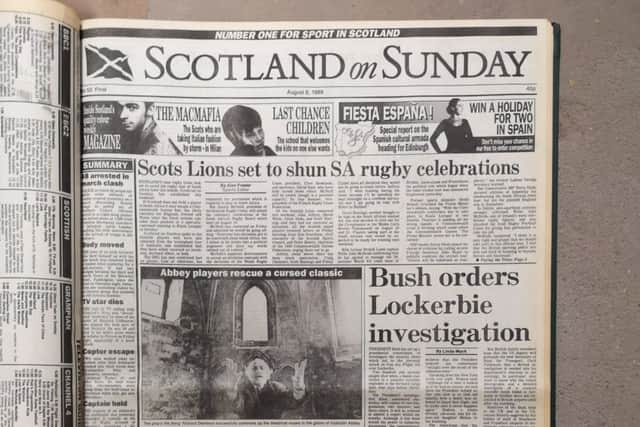

Among innovations was the Macallan/Scotland on Sunday short story competition, whose first judges included William Boyd, Muriel Spark and Allan Shiach, head of Macallan, who also wrote screenplays for films such as Don’t Look Now. Taylor said: “Among the early winners were Ali Smith and Michel Faber. It doesn’t get much better than that. Glory days.”
Groom, who succeeded Jaspan as editor in 1994, said: “For me, the prospect of creating a quality paper outside London was irresistible. For all of us, it was a steep learning curve. The hardest challenge in creating a new newspaper is to give it a strong personality and identity. That took a while.
“The paper had a surprisingly good relationship with Margaret Thatcher, even though our writers gave her a hard time in the opinion columns. She gave us two interviews in the paper’s early months. We never got one with John Major.”
Advertisement
Hide AdSoS’s first Westminster editor, Peter MacMahon, now political editor of ITV Border, recalled: “Interviewing Thatcher was the most terrifying thing I have ever done. She was formidable but perfectly civil. I remember she even went round at the end clearing up the tea cups.”
Circulation grew to peak at 134,000 under editor John McGurk in 1998. It has won dozens of awards, including UK Newspaper and Sunday Newspaper of the Year, fuelled by major stories such as the tracking down of Scots-born Asian girls who had been forced into arranged marriages in Pakistan.
Advertisement
Hide AdOther investigations exposed drug-taking by leading Scottish athletes, an Italian mafia cell in Aberdeen and the exhumation of the body of a suspect in the notorious “Bible John” murder case.
As well as attracting a faithful readership, SoS has gained huge affection from its staff over the years. Kevin McKenna, who was at the paper between 1990 and 2000 as sports editor and deputy editor, said: “I can say without any doubt that these were the happiest years of my 35-year career.
“I think one of the principal reasons was the sense that your colleagues had become part of your extended family and that we were constantly fighting against bigger and much better resourced rivals and doing something radically different from them.
“The esprit de corps also arose from the relative youthfulness and inexperience of the editorial staff. Most of us were given our chance at an age which all of the other ‘nationals’ would have considered to be too young.
“I have lots of happy professional highlights but probably the most satisfying was working through the night to help produce an eight-page Diana pull-out between 3am and 8am on the occasion of her sad death.”
Kenny Farquharson, whose two stints on the paper ended as deputy editor until 2015, said: “Right from the start it was a paper that had confidence in its writers. Successive editors gave reporters the time, the word count and the freedom to produce great journalism.”
Advertisement
Hide AdMargot Wilson also recalled the “gold dust of great writing” which made editing the paper “a constant pleasure”.
Ginny Clark, who was at SoS from 1998 to 2000, said: “As probably the first woman to be appointed sports editor of a national newspaper in the UK, I experienced one of the most exciting but also high-pressure spells of my career. At SoS, I was joining a prestigious sports section renowned for innovation, quality of writing and, on occasion, a slightly maverick approach.”
Advertisement
Hide AdPictures were also treated differently. Picture editor Kayt Turner, whose role now also includes The Scotsman, said: “Our reputation became such that we regularly had foreign photographers pitch up at the offices looking for shifts.” Award-winning photographers Adam Elder and Robert Perry made their names in these pages.
SoS continues to win awards. Feature writer and columnist Dani Garavelli, who joined the paper in 1997 received the first Nicola Barry Award for campaigning journalism at the Scottish Press Awards this year.
She said: “When I worked as the crime reporter at The Journal in Newcastle, I was obsessed with getting a job at Scotland on Sunday, which seemed to be the newspaper for reportage.
“It took me three or four years to finally wangle myself a staff position, but it did live up to expectations.”